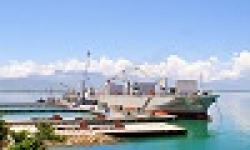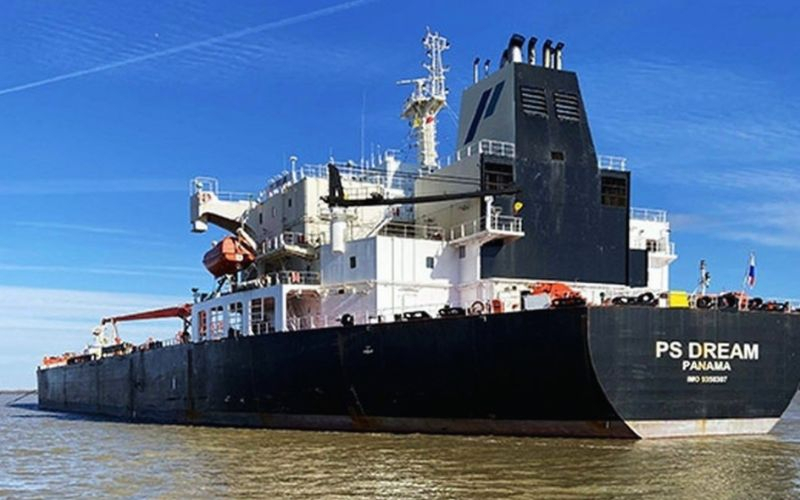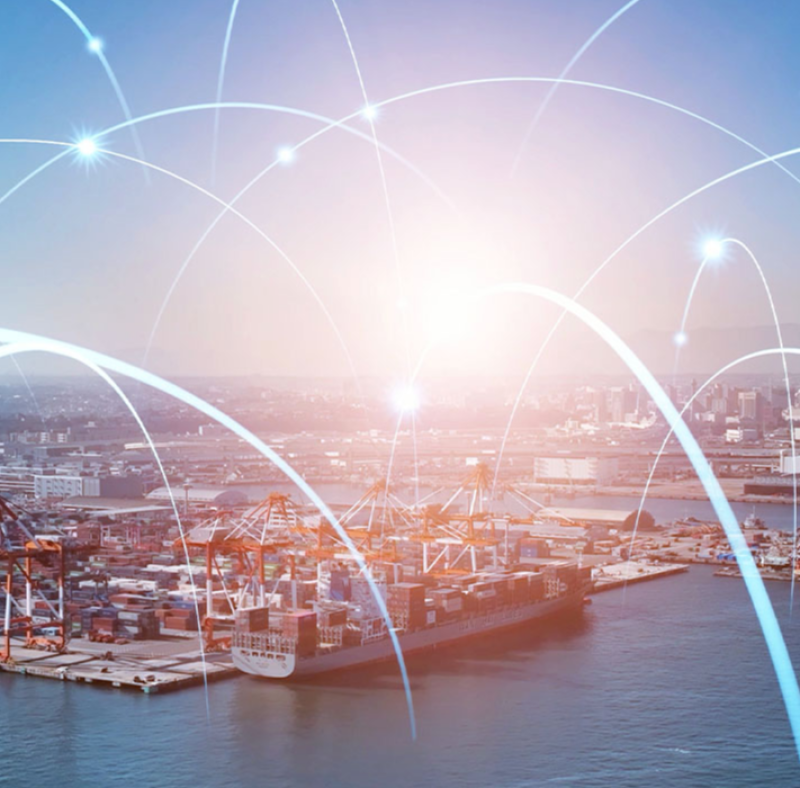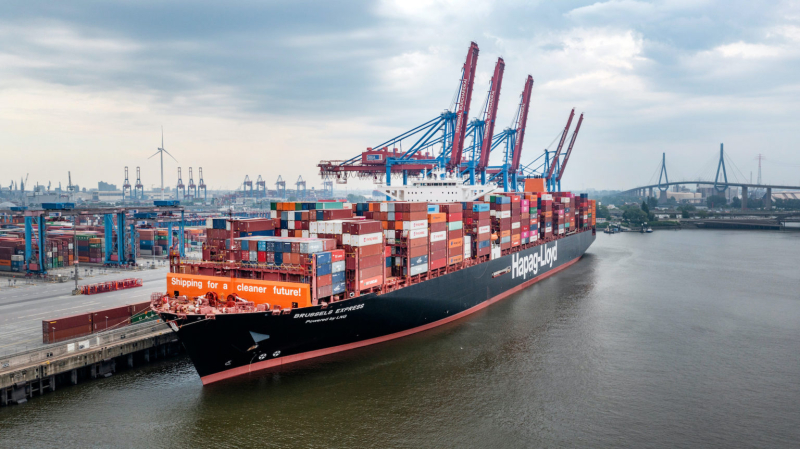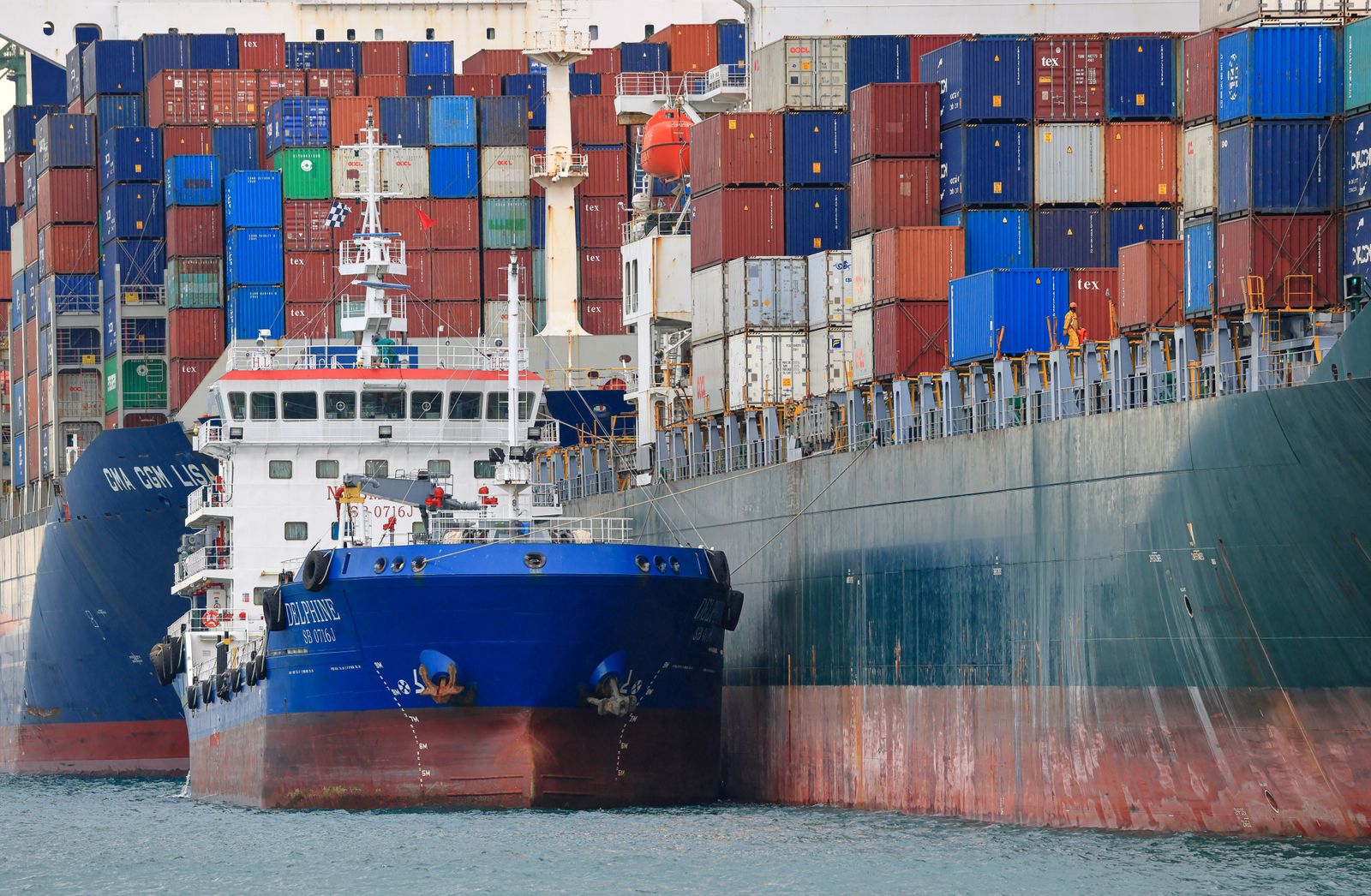
Ships are waiting up to three days to berth at Singapore (pictured) due to vessel bunching and congestion. Photo credit: MMXeon / Shutterstock.com.
Singapore has joined Shanghai, the world’s second-busiest and busiest ports, respectively, in facing congestion driven by a rush of exports to the US during a 90-day tariff cooldown, according to forwarder and carrier sources.
Operations in Singapore have been “heavily disrupted,” with transshipment cargo delayed by up to two weeks, forwarder Kuehne + Nagel said in an update Wednesday on its SeaExplorer visibility platform. According to a Monday update from container carrier Hapag-Lloyd, ships are waiting up to three days to berth at Singapore’s primary terminals due to vessel bunching and congestion.
That Singapore is the world’s largest transshipment hub makes it convenient for carriers to transship cargo as they redeploy vessels from European and other long-haul trades to US-focused services. Congestion at other Asian ports is also contributing to a backlog of ships in Singapore.
“PSA Singapore has seen a high concentration of container vessel arrivals in recent weeks, attributable to several factors, including some service reconfigurations by shipping lines in response to various business changes and global issues to optimize their network operations, as well as ripple effects from congestion and delays at other locations,” a PSA spokesperson told the Journal of Commerce.
The spokesperson said the port’s spare capacity and resources are being utilized to mitigate the impact of the rise in vessel arrivals.
Shanghai congestion worsens
The situation has also deteriorated in Shanghai, with carriers reporting wait times of up to five days, compared with about three days last week, according to K+N.
The largest global forwarder said shippers are diverting cargo away from Shanghai to Ningbo to avoid delays, slowing operations in Ningbo. Similarly, congestion has worsened at Port Klang, Malaysia’s gateway terminal complex, with “heavily disrupted operations” and vessel wait times of up to three days, K+N said in its SeaExplorer update.
Tan Hua Joo, co-founder of shipping data platform Linerlytica, told the Journal of Commerce, “Both Singapore and Port Klang are experiencing longer berthing delays due to heavy vessel traffic and bunching of arrivals due to delays at upstream ports.”
And in South Asia, the ports of Colombo, Sri Lanka; Mundra, India; and Chittagong, Bangladesh, “are also seeing increased waiting times at the moment,” Hua Joo said.
Vessel schedules from Ocean Network Express (ONE) this week provide an example of how the additional pressures in Singapore and Port Klang are impacting network fluidity. ONE’s 3,000-TEU Wan Hai 331, deployed on its Japan-Straits-Malaysia service, was four days late departing Hong Kong last Friday, but berthing delays in Singapore and Port Klang have increased these delays to eight days, with the ship scheduled to arrive in Singapore on June 3.
Schedules for June and July indicate ONE has lengthened the estimated time of arrival from four days to up to seven days from Hong Kong to Singapore for a raft of vessels operating on intra-Asia and Europe-Mediterranean services to account for berthing delays in Singapore.
Other ports in Asia, including Tianjin, Qingdao, Shenzhen, Nansha and Hong Kong in China; Busan, South Korea; Yokohama, Japan; Ho Chi Minh, Vietnam; and Manila, Philippines, are also dealing with declining port performance, K+N said.
The number of vessels waiting at key ports in Asia has been trending upward again in the last two weeks after plunging from a high at the start of May, according to Portcast’s ship tracking index. There were 62 ships waiting to berth at Shanghai on Wednesday, approximately double the number in mid-May. The vessel backlog outside Singapore hit 55 on May 14, before plunging as low as 23 on May 21, Portcast data shows.
Attention turns to US West Coast
During Evergreen Marine’s annual general meeting Thursday, chairman Chang Yen-yi said port congestion would spread to US West Coast ports next month as vessels from Asia, including extra capacity that carriers are deploying during the current tariff pause, start arriving at Los Angeles and Long Beach.
Gene Seroka, executive director of the Port of Los Angeles, is confident that the nation’s busiest US container gateway is ready to handle what he expects to be a relatively minor surge in volumes compared with previous sudden demand increases, such as during the COVID-19 pandemic.
“You won’t see a deluge of freight here at the Port of Los Angeles,” Seroka said in a May 18 briefing. “We will not be caught off guard.”
Similar to during the pandemic, the sharpest limits to capacity during an import surge will be outside the truck gates, not at the marine terminals. As containers exit the ports, the influx of international intermodal shipments will test rail car supply, and importers and consignees could face less availability of warehousing and chassis.



